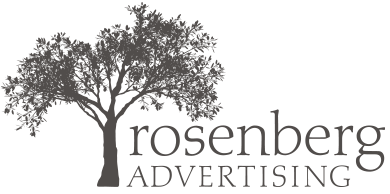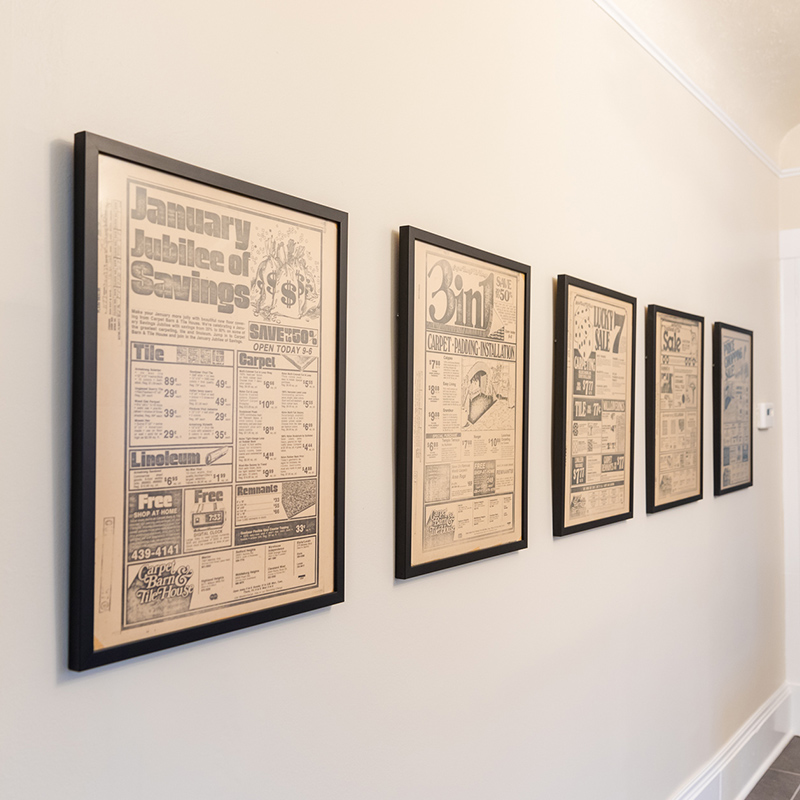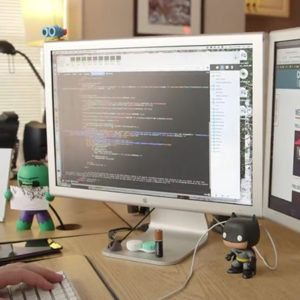When I began working for Rosenberg Advertising as a graphic designer back in 1983, Motorola had introduced the first mobile phone, my hair was not at all grey, and marketing vehicles were pretty straight forward. TV, radio, direct mail, and newspapers were king. Magazine ads, both regional and national, were viable options. Outdoor advertising, in the form of billboards and the sides of buses, could be very effective. Store newsletters, delivered by mail, were popular. Even cold-calling, that most dreaded of marketing ideas, had its place. And many small businesses spent a significant portion of their marketing dollars on Yellow Pages ads.
Those were simpler times.
Yes, many of the marketing options that could be deployed 36 years ago are still available today, and many of them can still be effective. Yet all of them have been at least somewhat modified, transformed, or in some cases, have been rendered obsolete by technological advances.
Television advertising is a good case in point. TV is as popular as ever—in this case, it’s the audience that’s changed. Viewers no longer want to watch television on someone else’s schedule. They want to watch what they want to watch, when they want to watch it, on the device they want to watch it on. Enter OTT (Over the Top) advertising. That is, advertising delivered to platforms other than traditional cable television. Commercials can be narrowly targeted to specific viewers on streaming services, smart TVs, internet-enabled blue-ray players, HDMI sticks like Roku, and even game consoles. And even as more and more viewers cut the cord to cable TV, cable can still be effective, as it offers the opportunity to select very specific target audiences. One could even argue that pre-roll advertising, the video messages that play before your favorite YouTube videos, have much in common with traditional TV commercials, but are delivered in a new format.
Like TV, radio is still around and still popular. Radio advertising still works, when used intelligently. The new wrinkle here comes in the form of services like Pandora and Spotify. These allow the listener to customize their listening experience in ways that were unheard of 10 years ago; more importantly for the marketing world, it allows you to customize your message to that very specific listener. You can drill down, using an array of filters, and target listeners with laser focus. The same is true in the podcast arena, as companies like ZipRecruiter, Squarespace, Casper, Progressive, and Geico would attest. Progressive and Geico, in particular, are long-time traditional radio advertisers who seamlessly made the digital leap.
For both TV and radio, the game-changer is the ability to narrowly target specific audiences using new technology. This theme will continue through every other marketing vehicle discussed.
Direct mail may not be as prevalent as it was at one time, but let’s face it, it still litters your mailbox daily. The difference today is, again, accurate targeting, and personalization. It is now possible to get your mailer to the person who may be most interested in your message, which means you can print less, saving on both printing costs and postage. And thanks to printing advances, each piece can be personalized to a specific person, addressing them by name, and tailoring the message to their actual interests.
Newspapers are not what they used to be. Many have gone out of business, or print less frequently. They still serve a marketing purpose, particularly for small businesses, and in rural areas lacking in internet reach, but that purpose has no doubt diminished since 1983. Yet even here, nearly all newspapers still printing have also gone digital, with online editions that extend their reach.
Nearly everything I said about newspapers is equally applicable to magazines, and if you have the right product or service, magazines can work for you. Magazines fall roughly into two categories—big general interest magazines with national distribution (think Time, Cosmopolitan) and smaller niche publications for specific topics (model airplanes, show dogs) or specific places (Cleveland Magazine). Again, like newspapers, every magazine now has an online presence, extending their reach and offering opportunities for digital advertising.
Outdoor advertising — billboards — have been around forever, and will be around forever. As long as there are roads, and cars on those roads, billboards will make sense. Billboards in the modern age, however, are plastered along very different roads—the digital highway. Do a little internet browsing. Go ahead, I’ll wait. All those display ads you were served as you browsed around, advertising something having to do with whatever it is you searched for last time you Googled something, are digital billboards. Much like traditional billboards, they are graphic displays advertising a product or service, but they are much more targeted to your interests. That’s the real beauty of digital billboards. The advertiser can be precisely selective in choosing who sees their ads.
Let’s lump mailed store newsletters and cold-calling together, as they’ve both been nearly replaced by the same thing—email. Newsletters still look, for the most part, the same. A combination of sales message, in-store news and gossip, promotion and class schedules, tips and techniques. The difference now is in distribution vehicle. Those newsletters are either emailed to the store’s customer list, or posted to the store website. They are not usually mailed. And cold-calling. Ah, cold-calling, that most frustrating and soul-crushing of marketing ploys. Instead of picking up the phone with a sigh, hoping the list of numbers in front of you is at least semi accurate, you craft the perfect message, or several messages, and hit send.
Yellow Pages. RIP. Okay, that’s not completely fair. Sure, just about everyone has Google in their pockets and at their fingertips, rendering that heavy door-stop of a book irrelevant. But there are still people, mostly older, who cannot or will not use computers, and carry around flip phones if they own mobile phones at all. There are also small towns and rural areas with limited or no internet connectivity. For them, the Yellow Pages provide an important service.
All of these marketing advancements share two common traits—technological advancements and access to the internet. In fact, with a robust internet presence, you no longer even need a brick and mortar physical space. A successful business can exist completely and exclusively in digital space. All this new technology presents exciting opportunities in marketing. It also presents unique and ever-changing challenges, as technology does not stand still. I’m sure that in another 36 years, in the year 2055, all these cutting-edge marketing vehicles will seem hopelessly quaint and old-fashioned. The trick is to stay ahead of the curve.




